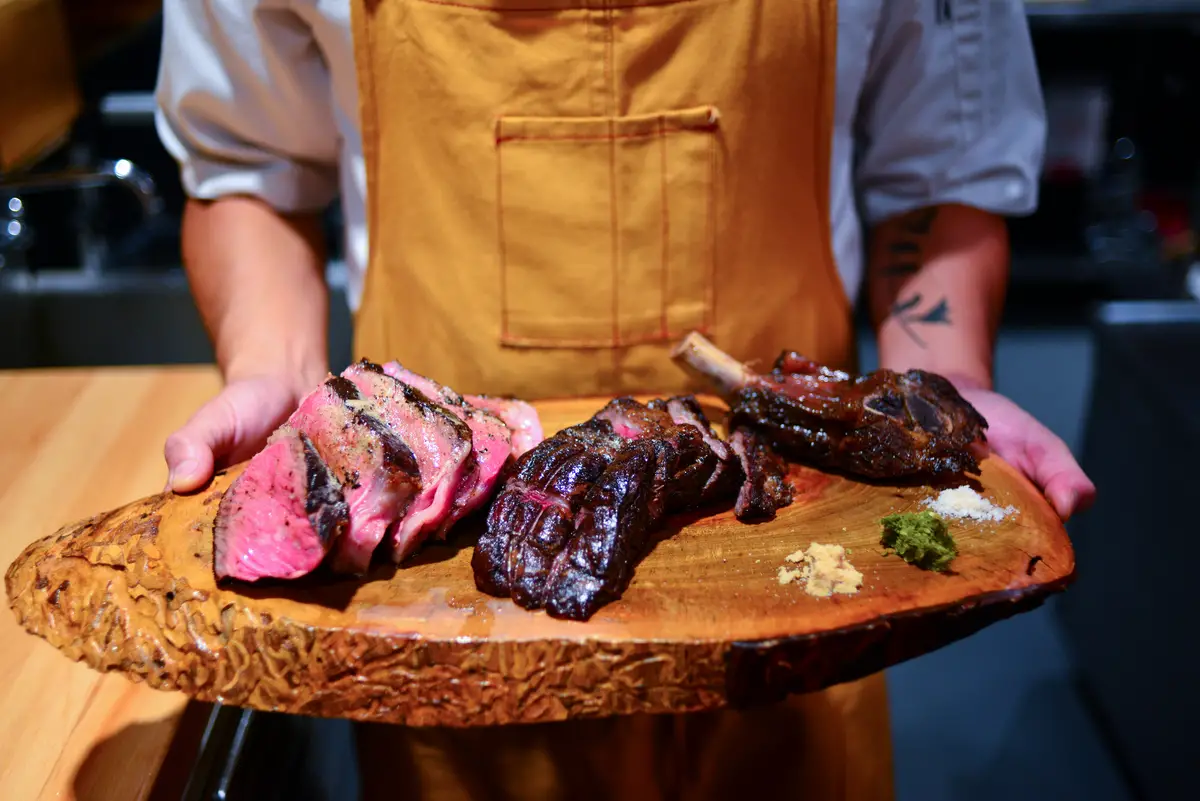Depending on the source, between two and five cities in Texas routinely rank in the Top 10 Fattest Cities in the Country. Regulars such as El Paso, McAllen and San Antonio have sat contentedly on the list for so long that butt-depressions mark their spots. Second-stringer cities like Houston and Corpus Christi yoyo on-and-off the list like Jenny Craig lifers, their self-control waning and waxing like tides controlled by the great pizza pie in the sky.
The statistics are grim: Texas is the fifteenth most obese state in the country, sitting uncomfortably at a solid 30 percent rate of adult obesity. Children ages ten to seventeen have a 20 percent chance of obesity, which makes Texas the tenth most successful child-fattener in the country and the most courteous one since the witch from “Hansel and Gretel.” The incriminating cherry on top—which we don’t need, thank you—is that more than 15 percent of high school students are obese, the fifth worst in the country. Thanks a lot, high schoolers!
And while the obesity statistics are incriminating, tackling the Texas mentality is a sizable part of the problem. “Everything’s Bigger in Texas” hasn’t done us any favors, practically mouthing the fat jokes to other states. The immense size of the state adds the burden of psychic obesity to our youth, as if they didn’t have enough on their plates already. In addition to being overweight, our young people live in a state that encourages all things girth. Texas is the portly pet-owner we all know who overfeeds her chubby cat out of love, but is still baffled by Mitzy’s persistent sleep apnea.
Some of Texas’ most iconic symbols are cattle, football, trucks, stars and oil—all of which are either big or encouraged to be big. Texas Tech has the second largest contiguous college campus in the country, and the city of Houston is bigger than the island of Hawaii. Houston, San Antonio and Dallas are the fourth, seventh and ninth biggest cities in the country, and five of the ten fastest growing cities are in the state as well. Everything about Texas says big or getting bigger.
And while the obesity epidemic is unsettling, there is one important silver lining. In 2014, fourteen chefs and restaurants from across Texas were dubbed James Beard Award semifinalists. The James Beard awards are the Oscars of the food world and being nominated is one of the most prestigious honors in the culinary world.
In the last several years, Texas has been the “Titanic” of James Beards—winning an ungodly number of awards with the complete support of its competitors. The percentage of talented chefs and remarkable restaurants from Texas is almost as staggering as our percentages of obesity, and it doesn’t take a NASA scientist (another Texas icon of heft) to put two and two together: Texas has a weight problem because Texas has the best food in the country.
In Houston, restaurants Oxheart and Underbelly have made national news for harnessing the multi-cultural influences of the city, cooking what Houston Press food-writer Katharine Shilcutt refers to as “Mutt City cuisine.” In Dallas the loud-mouthed chef of Knife, John Tesar, made national news for tweeting “Fuck you” to a food critic. He’s also responsible for bringing the steakhouse into the twenty-first century. In Austin, influential chefs like Bryce Gilmore, Paul Qui and Andrew Wiseheart have the entire culinary world peeking over their shoulders for a glimpse at the future. As if to illustrate this point, Qui is opening a twelve-seat “Fuck you I rule” sushi restaurant called Otoko on South Congress. It will reportedly be invite-only and upwards of $150 per person.
Even San Antonio has emerged from its culinary chrysalis, capitalizing on its geographic status as the Mexican-American bridge city. Andrew Zimmern of “Bizarre Foods” chose to tape his one-hour season finale in San Antonio rather than any other city in the world. He visited Mixtli, El Machito and Restaurant Gwendolyn, fawning over San Antonio’s unique food culture. He left as yet another food personality converted by the occult powers of Texas cooking. Food figures worldwide have discovered the treasure of Texas, including Anthony Bourdain, Andrew Knowlton, David Chang and Jimmy Kimmel.
And while our fine-dining dazzles, the food of real Texans is just as lustrous: breakfast tacos, pecan pie, kolaches, barbecue, Topo Chico, King Ranch Casserole, tortilla soup, Frito pie, fajitas, chicken fried steak, chili, Dr. Pepper, Blue Bell Ice Cream (RIP), Julio’s chips, margaritas, Shiner, queso and Big Red. While it’s not Michelin-starred tweezer food, it’s what runs through the veins of Texans.
It’s tempting to pit the two cuisines against each other: fine-dining versus country cooking. But it doesn’t work that way. Good food cultures cover each end of the spectrum and everything in between. Without chefs pushing boundaries cuisine stagnates and dies, but without tradition and heritage innovation loses its footing. The fact that both exist and are both so highly lauded speaks to the rare pedigree of Texas food.
It also attests to the high gustatory standards its inhabitants have. When you have a diner who eats Gardner’s fermented potato bread with red fish rillette and green-bean miso for dinner, and then wakes up and eats chilaquiles and a michelada for brunch—that strikes fear into the heart of every half-baked restaurant concept in the world. We are spoiled in that we expect delicious food because we’re surrounded by it. Texans may have an obesity problem, but if other states could have our food they’d have an obesity problem too.









